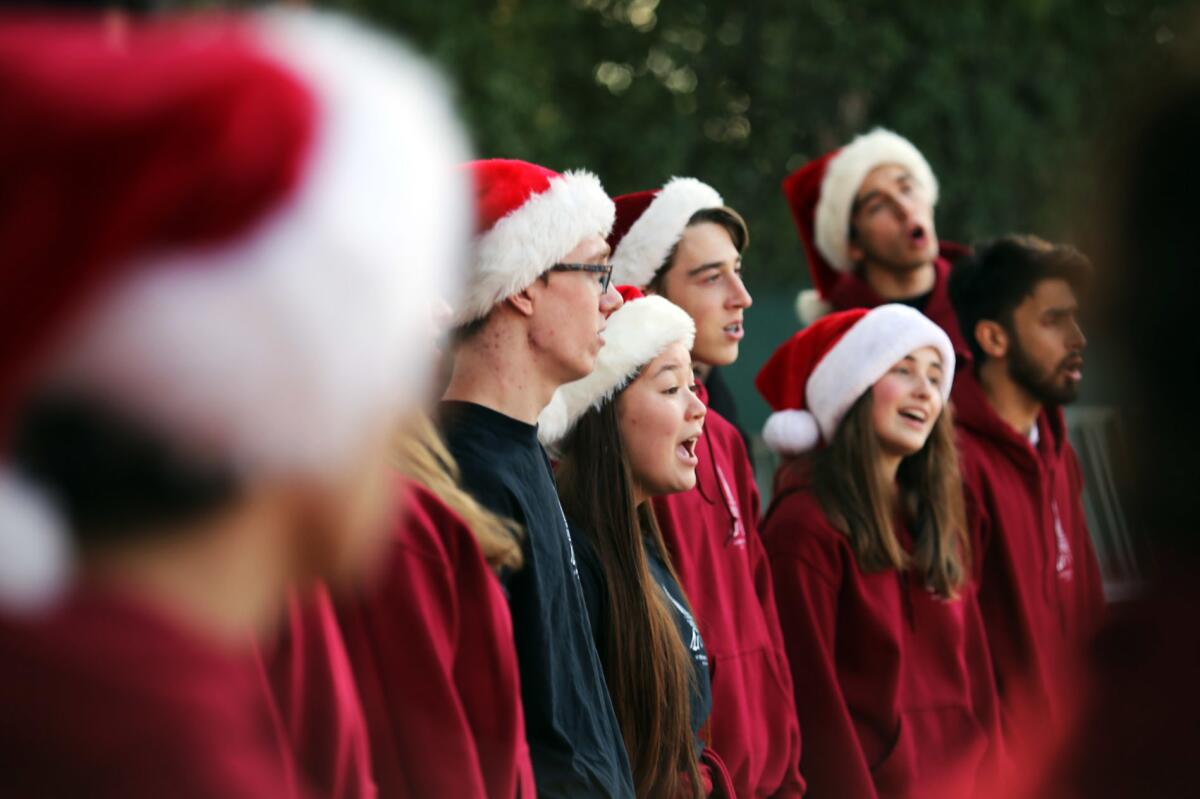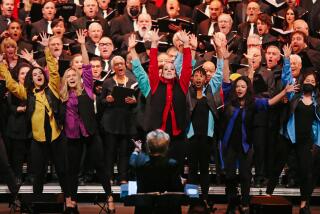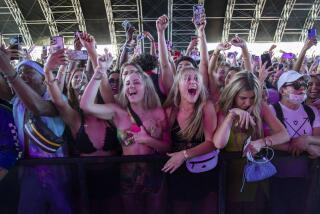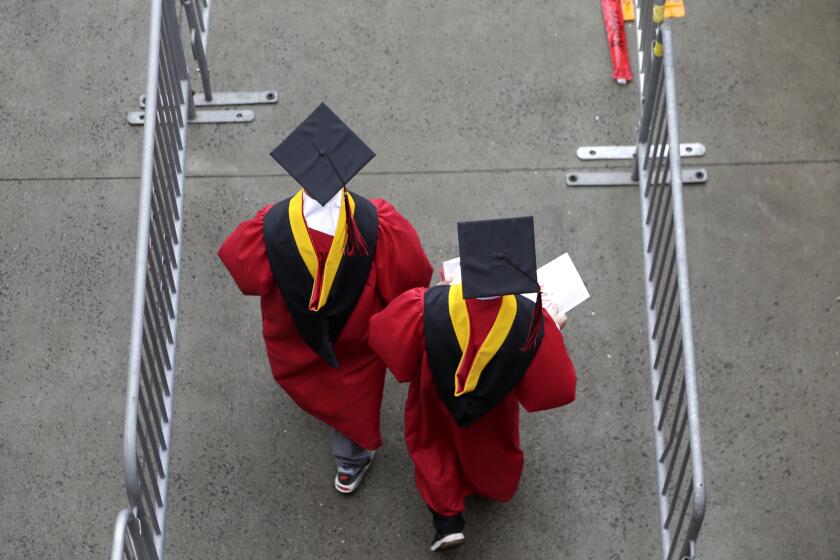Op-Ed: The pandemic made my singing group hit pause. We never thought we’d still be silent in December

From my perch overlooking North Carolina’s Eno River, the birds’ singing reminds me that I’ve barely sung a note myself in months.
During the pandemic, some researchers have declared singing riskier than talking. When vocalists let loose full-throated phrases, they propel droplets and aerosol particles into the room — all potentially laden with coronavirus.
My singing group, together for two decades, didn’t need much convincing to go on hiatus. The virus had already sent people we loved to the emergency room. But we never dreamed that come December, the season of Christmas carols and holiday concerts, our silent season that started nine months ago would continue.
Singing with others is just one of the pandemic’s innumerable incidental losses. Yet, like millions who love singing, I feel the absence physically, as I would if I missed a meal or went weeks without exercise.
Once a week, our group gathered in living rooms, mapping out harmonies, trading leads, planning concerts and recordings. It offered a reliable release. We sang at festivals and bars, birthday parties, fundraisers, weddings and funerals. And then in March, the singing stopped.
Overnight, the pandemic transformed group singing into a life-threatening activity, like hang gliding or rock climbing. First a Mount Vernon, Wash., choir practice became a superspreader event where more than 50 attendees contracted COVID-19 and two died. Other outbreaks followed choir rehearsals in Germany, Britain and the Netherlands. Several countries banned choral singing.
Singing, the alchemy by which breath becomes music, is a physical pleasure. When people sing, their bodies become instruments, like bells, vibrating as breath rises from the diaphragm, through the lungs and larynx, to emerge as music. To me, there’s no purer expression of joy than giving over my mind, heart and breath to song. With one exception, singing with others.
In our “Dispatches From the Pandemic” series, we bring you personal stories from people whose lives have been altered by COVID-19.
For something so profoundly human, singing retains a degree of mystery. The music making happens largely out of sight, inside the body, as subtle internal movements shape a column of breath.
No one can truly show you how to sing. Piano teachers can demonstrate where to place your fingers on the keyboard. Voice teachers describe posture, breathing technique and vocal exercises. But mainly, they conjure forth music using imagery. Envision sound spilling from the top of your head, a teacher may say.
Imagine the song pouring out of you in a constant stream, like water, a singing teacher once told me. When one singer joins others, that river widens exponentially. And when voices combine and a shimmering chord rises from the group, each singer feels the lift, like a swelling wave.
Like millions of others, I’m addicted to those soaring harmonies. Before the pandemic, some 54 million Americans took part in group singing. That’s 1 in 6 of us. I grew up singing in choirs, choruses and musicals, and chose a college, Yale, steeped in singing, where choirs performed gorgeous cantatas and entryways rang with Cole Porter tunes.
As an adult, I missed all that, so a friend and I started a singing circle that became a seven-woman performing group. We called ourselves Stella and gave our first concert at an art museum in 2000.
Our lineup remained mostly constant, and we came to know one another’s voices intimately. We’d blow an opening note and fall into a chord as naturally as leaves fall to the ground. Rehearsals gave us time and space to create together. What happens if we flip the chord upside down? What if we omit the third, leaving a haunting open fifth? The results could be hilarious, or beautiful.
Since March, three of us have come together once expressly to sing. We gathered by the river, stood six feet apart and sang out over the water. Betsy’s rich, buttery alto and Stacey’s bright, clear soprano framed the opening chord while I held down the melody of the traditional tune, “Down to the River to Pray.” As we sang, the river sparkled silently at our feet. It felt glorious, even if the chord was incomplete.
We hesitate to try again. Singing together during the pandemic feels too perilous. Some choruses gamely produce online concerts, recording parts separately and editing them together. Yet for me, that pales next to standing in a circle, awash in music of the moment.
The pandemic has caused searing grief and many quieter losses. It has sucked so much color out of life — plays, concerts, readings, art exhibitions, travel, restaurants, dinner parties — the list of canceled delights goes on and on.
Of course, I am lucky to be healthy. Yet I miss all that brightness. I dearly miss my family and friends. I especially miss my adult daughter, stranded behind the shuttered Canadian border. And I sorely miss making music with other singers, something I never imagined could be so fragile.
The advent of a vaccine brings hope that we can soon reclaim our old lives. Soon, but not yet, I think as I walk by the river, where a chilly wind rattles the branches, shaking the last stubborn leaves to the ground. Christmas is coming, the bare branches declare. But holiday caroling will have to wait.
Alison Jones writes and sings in Hillsborough, N.C.
More to Read
A cure for the common opinion
Get thought-provoking perspectives with our weekly newsletter.
You may occasionally receive promotional content from the Los Angeles Times.











